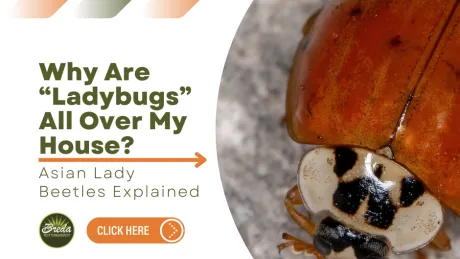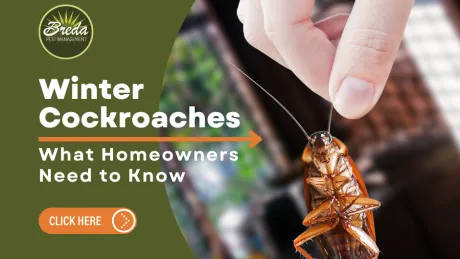While harmless in appearance, squirrels can be major nuisances to a home. Between chewing through wood and siding, leaving oil and droppings that can damage parts of your home, and spreading dangerous diseases, the effects a squirrel can have on your home and family are anything but cute.
If you have squirrels living in the home, there are some techniques you can try to remove the squirrel yourself before calling a professional.
Prevention
The best way to stop a squirrel from wreaking havoc in your home is to stop it from ever getting in.
The first step to prevent squirrels from getting into the home is to seal all of their potential entry points. Squirrels can enter through even the tiniest holes and cracks, even those that aren’t at ground level. If any trees or bushes are close enough to the home, the squirrel can leap from them and gain entry.
Do a thorough inspection of your home, sealing any gaps or openings you come across. Be sure to seal the hole with a material that the squirrel cannot chew through, such as stainless steel mesh or sheet metal. Otherwise, they’ll just chew a new hole and the problem will continue.
If you see squirrels in the home, do your best to remove all of them before sealing the entry points. Leaving a squirrel to die in a home causes additional problems, such as disease and odor, so if you’ve personally witnessed squirrels in your home, it may be time to call a professional.
Assess the Situation
You will need to study the situation in order to determine the best removal strategy. First, determine how many squirrels there are, and if there are any babies. If there is a nest of babies in the home, removal becomes much more tricky.
Mothers are very protective of their young, so it may be in your best interest to wait until the babies are old enough to leave the nest on their own. Once they are old enough to leave, their removal can be treated like the any other squirrel’s.
After determining roughly how many you are dealing with, you will need to determine the daily patterns of the squirrels in your home. More than likely, the squirrels are using your home as a place as a warm escape from the cold outdoor weather, and they are most likely using their original entry point to periodically leave in search of food. If squirrels are leaving throughout the day, your best option may be to wait for them to leave and quickly seal up their entry points while they are out, preventing their return.
A good strategy is to seal every entry point except the main one while the squirrels are still in the home, then seal the final hole while the squirrels are out. While this option is generally the easiest and most humane, it is important to note that it can be difficult to ensure that every single entry point has been sealed and that no squirrels are still inside.
Traps
Trapping may be optimal way to get rid of squirrels for two reasons, the first being that there are no registered legal poisons for squirrels in the US, and the second being that killing a squirrel via poisons or other methods still leaves a dead squirrel body in your home.
Trapping a squirrel can be incredibly difficult, so having the right equipment is essential. Here are different types to consider:
- Single Animal Live Cage Traps: These are the most common type of trap. The squirrel enters the trap, lured by the bait inside. Once it enters, the door is triggered and shuts on the squirrel.
- Repeater Trap: This trap can be used to catch multiple squirrels before removal. To use, place the trap in the entry point. As each squirrel leaves to get food, it gets caught in the trap.
- One-way Squirrel Exclusion Door: Similar to the repeater trap, the one-way exclusion door is placed on in the entry point. Unlike the repeater trap, it allows the squirrel to leave the trap but not return into the home.
Note that in many states it is illegal to trap a squirrel yourself. Check your state’s laws before going forward with trapping.
Other Methods to Remove Squirrels
If trapping is illegal in your state or too difficult, there are other methods to try. Just remember to monitor the squirrels and seal the entry points as soon as they leave.
- Squirrel repellents: Squirrel repellents irritate the squirrel, hopefully enough to leave. Repellents come in a liquid or granular form.
- Using light: Place a lamp close to the squirrel’s nest to drive them out, as it will bother them while they sleep. Make sure it is the light cool-burning, and avoid wires that the squirrel can chew through and cause an electrical problem or fire.
- Using sound: Like light, squirrels do not like noise when they are trying to sleep. Try placing a radio close to the squirrel’s nest to drive them away. Again, avoid loose wires.
- Urine: Squirrels are prey to several animals, such as foxes. Urine of predators can be purchased online or in some retail stores and placed near the nest. If a squirrel smells the urine and believes a predator is present, it may leave. Try soaking an old towel in the urine for easy cleanup.
What Should I Do Once I Trap the Squirrel?
Check the trap often, so that the squirrel does not suffer or starve. It is best to drive several miles away (at least 3) to release the squirrels so that they cannot find their way back into your home and their nest.
Although relocating the squirrel is the easiest method, it may not be the most humane. Studies have shown that most squirrels relocated after being trapped die soon after their relocation because they are not familiar enough with the area to survive. The best option is to contact a wildlife rehabilitator and follow their instructions.
Once the squirrel is removed, take preventative measures to ensure you do not have another squirrel issue. Finally, clean the area well, as squirrels will leave behind feces and urine that can carry diseases.
What Else Can I Do?
Ultimately, the only sure way to safely remove squirrels from the home is to call a professional service. A wildlife control professional will know how to quickly and humanely remove the squirrels while also assessing the root of the problem and cleaning up the infested area.
If you're interested in learning more about squirrels, rodents, and other widlife that can cause damage, spread disease, and wreak havoc on your house, download our free Ebook, The Ultimate Guide to Wildlife Infestation, and protect your home from invaders.



